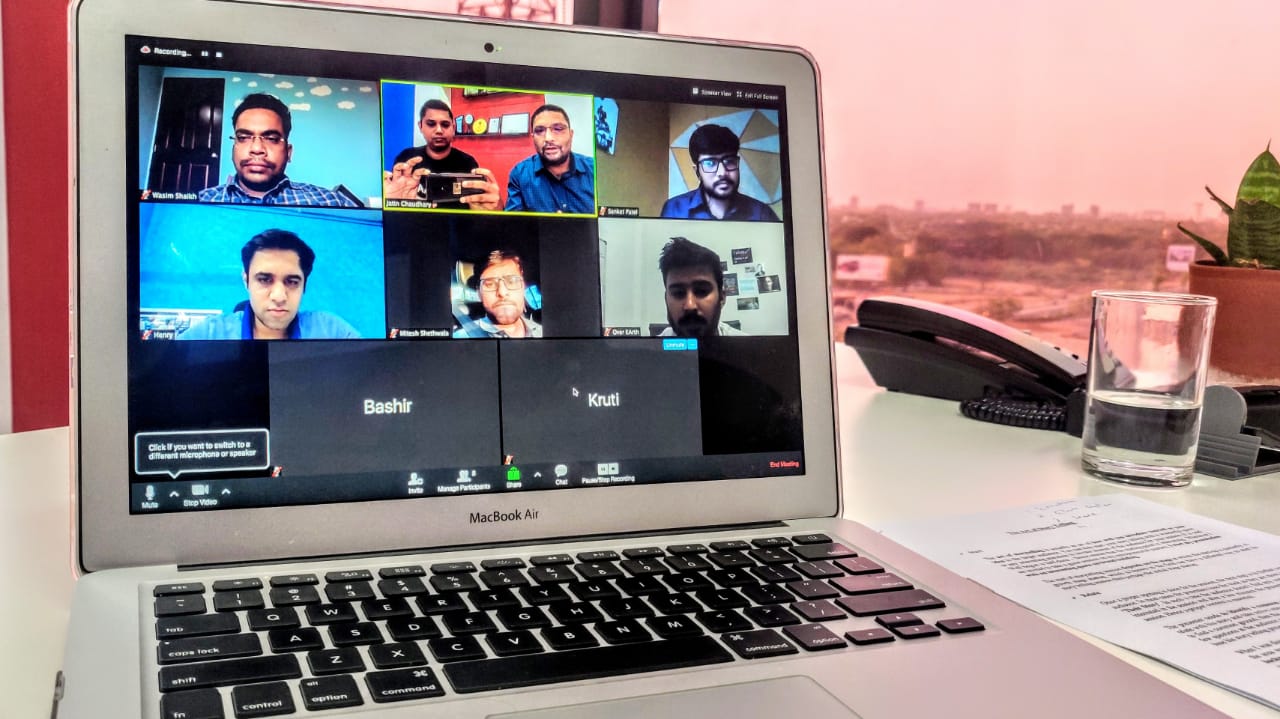Here's the recording of 'The Art of Storytelling for Startups' webinar.

This webinar was conducted by Nadeem Jafri (Cheif Mentor, Hearty Mart) and Jatin Chaudhary (Salesman, eChai).
Nadeem Jafri is Retail Entrepreneur, Marketing & Communication Consultant, Startup Mentor.
Hearty Mart brings the 21st century retail format to the rural and semi-urban market. Convenience, range, and value for money brought to your neighborhood with its chain of supermarkets spread across the length and breadth of Gujarat. Hence, the tagline, “Sabse Khaas Ghar Ke Paas.”
Hearty Mart Enterprise is committed to working for the development of rural public and continuously on the lookout for different opportunities that can be created at the rural level. Creating rural entrepreneurs and the launch of Adarsh Gruh Udyog are such initiatives & programs aimed at social upliftment at grass root levels for a better harmonious society.
The Art of Storytelling:
Start
The art of storytelling is actually an art of how well you introduce yourself or your idea to the target audience. You can kick start your storytelling with a wonderful quote or an interesting anecdote to invoke the interest of the audience for your session. It is said: Well begun is half-done – hence ensure that the starting point is interesting. Whenever I am invited to take a guest session on my entrepreneurial journey, I start my presentation with an interesting quote on brand building.
The start of the storytelling session depends on the stage at which the start-up is currently. A growth stage startup, which is known in the field can have a different way to start his storytelling session then perhaps the initial stage startup.
Relate
Once a proper opening is done for the session, the next step is to further connect with the audience. In most cases, the presenters lose the track as they are more interested in telling ‘Their Story’. In such a case the audience doesn’t find any common ground to remain interested in the session and after a few minutes, the presenter is just trying to finish his session. Hence a proper connect is essential.
The presenter needs to identify common ground with the audience so that they can relate with his story and take an active interest during the entire session. And if he is unable to find common ground, then the presenter should create ‘one’. For this, he can throw a few questions at the audience and try to gauge their interest and come up with the idea to base his storytelling presentation on it.
When I was discussing my store-idea with the people of Juhapura, I used to tell them that the area was “Unexplored but had the potential” rather than saying that the ‘area is backward without any basic amenity’. This positive way of communicating helped me connect well with them. And we positioned our store as “Sabse Khaas Hhar Ke Paas”. This positioning helped us create a common ground with them – For m,e it is important as it is my business for them it is important as it adds value to their lifestyle.
Engage
Keep your audience engaged in the presentation. A monotonous way of presenting normally leads to boredom and after a few minutes, the audience loses interest in the presentation. In order to avoid this, the presenter can add thrill or humour in his story telling session.
Winston Churchill has said: “Success consists of going from failure to failure without the loss of enthusiasm”. A successful entrepreneurial journey is full of failures, a smart presenter can intertwine his failures while narrating his story to the audience and can discuss the learnings he had in the process. This motivates the audience and they are more attentive to the remaining part of the story.
I discuss my failure of not earning a dime from my business forthe initial 5 years. I have seen the audience getting more curious to know about the steps I took to fight this gloom.
Present
An energetic presentation oozes confidence and makes the story believable. Hence the presenter should work upon his presentation and make it more convincing. The message, which he wants to convey should be crystal clear without ambiguity. Audience’s trust is directly proportional to the clarity of thought or idea.
Interesting punchlines helps in conveying the central idea to perfection. Captain James Kirk (Star Trek), while narrating his voyages in space, used to say “To boldly go where no man has gone before.” I use this punchline with a little tweak “To boldly go where no brand has gone before.” to discuss my journey of entering unexplored rural market with Hearty Mart franchisees.
Be Articulate during queries
This is the trickiest stage of storytelling. The audience can choose to not relate with the presentation at all and can have various queries, or the audience isn’t convinced at all with the idea and wants the presenter to re-think his strategy. In such a case the presenter should be humble in listening to the queries but at the same time he should be articulate enough to take forward his arguments politely.
During my storytelling sessions, many from the audience have asked me about my franchisee model. They feel that I haven’t done enough to scale up the franchisee and I should consider launching an IPO. I reply to them politely by saying that since it is a franchisee business I am not in need of funds to expand. But I end up saying that the point is well taken and we will give a serious thought to it.
End
The presenter should discuss his achievements or awards, which he won, at the end. This happy ending, keeps the audience happy and they take positive memories from the presentation. I discuss my awards and media-coverages at the end. I remember as a child I used to watch only those movies which had the happy ending. For this, I would first check the ending before going to the theatre. I apply the same logic here and it works.
...
You can share your insights and/or ask questions in the comments section.
ps: Get Your Annual eChai pass for Rs. 1000 per year from eChai.in to attend such super useful programs (50+ Events) throughout the year.



























